 Imagine your company just hired a new developer. The new developer is joining a team that is working on a big legacy software application. The task of becoming acclimated with the code stack will be challenging, especially in trying to discern what the other team members have contributed, and the direction the code is headed. Years ago, this would have been quite a task.
Imagine your company just hired a new developer. The new developer is joining a team that is working on a big legacy software application. The task of becoming acclimated with the code stack will be challenging, especially in trying to discern what the other team members have contributed, and the direction the code is headed. Years ago, this would have been quite a task.
Thanks to Git, onboarding a new developer is now much simpler and more efficient. With Git, the new developer can quickly clone the repository to access the project's complete codebase. That not only includes the code itself, but all files, folders, and the entire history of changes. Now the new member of the team can review past commits to better understand the evolution of the code over time. They know what features have been added and how bugs have been fixed. More importantly, they begin to understand how their own work will fit into the project in an accelerated fashion.
What is Git?
 Git is a distributed version control system used to track changes in source code during software development. It helps teams collaborate, manage code history, and coordinate work on files across multiple contributors. Originally developed by Linus Torvalds for the development of the Linux kernel, Git has become the de facto standard for version control due to its speed, flexibility, and ability to support non-linear workflows.
Git is a distributed version control system used to track changes in source code during software development. It helps teams collaborate, manage code history, and coordinate work on files across multiple contributors. Originally developed by Linus Torvalds for the development of the Linux kernel, Git has become the de facto standard for version control due to its speed, flexibility, and ability to support non-linear workflows.
Watch our Introduction to Git workshop to see how Git empowers modern development teams to version, manage, and secure their code at scale.
The Fundamentals of Git
To understand how Git works, you need to know how two fundamental components operate, commits and branches.
- A commit is a snapshot of the project's current state that captures changes made to files and directories at a specific point in time. It serves as a "save point" in the version control process, which allows developers to record meaningful updates to the codebase.
- A branch is an independent line of development within a repository that allows developers to work on specific features, fixes, or experiments without affecting the main codebase. Developers can create their own branches to isolate their work so they can make their own changes or test ideas.
Let's illustrate how this can work using a simple local development scenario. Suppose I am a developer, and I just installed Git on my desktop. I can create a new repository to serve as the storage location for my project. Every repository has a ‘main’ branch. This is where I commit my initial code changes. This committed code now becomes version one of the new application.
Now, I am ready to work on new features so I create a "development branch" that will be independent of the main branch. Once version two is created, I commit it to the development branch where it can be reviewed and tested before being committed to the main branch. The ability to conduct code reviews by multiple peers is an important feature of Git as it ensures that the code is thoroughly vetted and meets quality standards before being committed to production.
Curious how Git’s versioning model extends beyond code? In the Configuration as Code workshop, we show how managing infrastructure with source-controlled files makes DevOps workflows more reliable and scalable.
Other Git Capabilities
We opened this article with an example of distributed collaboration. Git also provides disaster recovery capabilities by allowing users to back up their scripts and notes. If a laptop goes down, the central repository serves as an offsite safe place for recovery so developers can work with little disruption. Disaster recovery also allows developers to revert to previous configuration if needed.
Unlike other centralized version control systems, Git does not rely on constant internet access. This means that developers can work offline as the entire repository can be stored on a local device, including its full history. This allows developers to work independently regardless of the internet.
Git also enables users to reuse and modify existing code by allowing them to clone or fork repositories. Cloning creates a local copy of an existing repository so that users can experiment with changes without affecting the original repository. Forking creates a new separate repository. This new repository can even be under a different account. Forking is ideal for open-source projects where users can make changes in their forked repository and propose those changes back to the original repository through a pull request. A fork can also serve as the foundation for an entirely new project.
For insights on integrating Git into secure DevOps workflows, check out our blog on Enabling Secure DevOps Practices on AWS.
Git For IT Admins
Don't think of Git as just a tool for developers. IT admins can utilize it for instances such as updating hundreds of switches across their networks. Switch configuration files are perpetually changed over time and Git allows IT admins to save switch configuration files in a repository. This gives an admin team the opportunity to track changes over time as each update is stored as a commit with a timestamp and description. With Git, device configurations are centrally managed and accessible.
Recommended Git Services
You may have heard about GitHub or GitLab, but neither of these platforms is Git itself. Instead, they are web-based SaaS platforms that rely on Git as their underlying version control system. Both GitHub and GitLab provide cloud-based repositories where developers can host, manage, and collaborate on code projects using Git's version control capabilities. Both these platforms provide an array of tools for project management, collaboration, issue tracking, and continuous integration/continuous deployment (CI/CD). While there are other options out there, these two are the most popular. Whether you're working on open-source projects, enterprise-level applications, or configuration code revisioning, GitHub and GitLab are great choices to harness the power of Git.
Best Git Practices
Using Git effectively requires adopting practices that ensure smooth collaboration, maintain code quality, and streamline workflows. Here are some expanded best practices for working with Git:
- Regularly commit your work to capture incremental changes as frequent commits create a detailed history. This makes it easier to track progress, troubleshoot issues, and roll back changes if needed.
- Write descriptive commit messages that clearly explain what changes were made and why, so that all teammates understand the purpose of the commit.
- Create branches for new features, bug fixes, or experiments to keep the main branch stable and clean.
- Avoid direct commits to the main branch as untested changes can disrupt the project.
- Collaborate through code review requests, to propose changes and ensure teammates review changes to the codebase.
Conclusion
Git’s distributed version control system allows developers to work independently while maintaining a complete history of changes. This balance enables seamless collaboration, efficient workflows, and robust code management. Developers can use branching to experiment freely, track progress, and ensure the integrity of their codebase. Two great ways to harness the power of Git are platforms like GitHub or GitLab which provide cloud repositories as well as integrated tools. Whether you're a solo developer or part of a large team, Git can foster greater productivity, adaptability, and innovation in modern software development.
Next Steps: To learn more about how Git can transform your development processes or to explore how WEI can support your DevOps initiatives, contact us today and start your journey toward smarter, more efficient software delivery.











